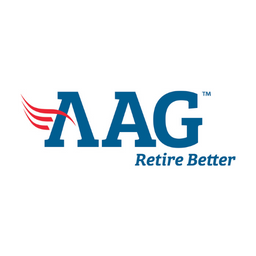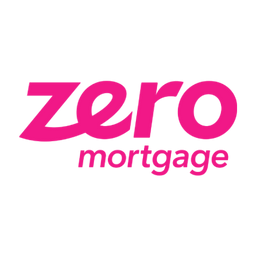You want to sell your current home and use the sales proceeds to make a down payment on a new home. But what if your home doesn’t sell as quickly as you expect it to, and you’re forced to miss out on opportunities to bid on homes as they hit the market?
This is a common dilemma for homeowners. Fortunately, bridge loans, home equity loans and HELOCs can make securing a second home easier. There’s also another option to get the funds you need for a down payment on a second property, and it doesn’t require you to take on more debt.
What is a Bridge Loan?
A bridge loan is a short-term debt product commonly used by homeowners in the market for a new home. If you’re looking to buy a new home before selling your current home, you can use the loan proceeds to cover the down payment.
These types of loans are secured by your existing home or other assets, and most lenders offer repayment terms between six months and one year.
Unfortunately, bridge loans could be problematic if it takes a while for your home to sell. More on that shortly.
Who Qualifies for a Bridge Loan?
You could qualify for a bridge loan if you have at least 20 percent equity in your current house. It’s also best if you meet the qualification criteria for a mortgage before applying.
Costs of Bridge Loans
Most bridge loans are accompanied by steep interest rates. It varies by lender, but many charge between 3 and 11 percent. You will also pay closing costs between 1 and 3 percent of the total loan amount. These types of expenses include loan origination, administrative fees and appraisal fees, escrow fees, notary fees and title policy costs.
When to Use a Bridge Loan
Suppose your current home is already under contract but won’t close before you purchase your new home. In that case, a bridge loan could be a sensible option if you need the funds from your current home to make a down payment on your next home.
But if you anticipate it taking some time to sell your current home, a bridge loan may not be worth it. You risk paying a fortune in interest or digging yourself into a financial hole by having to pay off a sizable loan in a short period.
What is a HELOC?
A home equity line of credit (HELOC) is another way to secure the down payment needed for a second home purchase. Most lenders allow you to borrow up to 80 percent of your home’s equity minus what you owe on your mortgage.
So, if your home is worth $395,000 and you owe $285,000, you could get a HELOC for up to $31,000 ($395,000 * .80 – $285,000).
Upon approval, you’re given access to a pool of cash that you can withdraw from and repay during a set amount of time referred to as the draw period. You will also make interest-only payments on the amount you borrow while the HELOC is active.
Once the draw period ends, the outstanding balance is converted into a loan payable in monthly installments over an extended period. The payment amount could fluctuate as the interest rate is usually variable on HELOCs.
Who Qualifies for a Home Equity Line of Credit?
Homeowners with at least 20 percent of equity in their homes generally qualify for HELOCs. You should also have a steady source of income, good or excellent credit score and a debt-to-income (DTI) ratio that’s not too excessive and meets the lender’s requirements.
Costs of HELOCs
Like bridge loans, you will also incur fees and closing costs if you get a HELOC. Also, be on the lookout for maintenance fees which are sometimes assessed annually, along with minimum withdrawal and inactivity fees. You could also be charged a cancellation fee if you close your HELOC early.
When to Use a HELOC
If you use a HELOC to make the down payment on your second home, you’ll likely save a bundle in interest. Furthermore, your monthly payments could be much lower, assuming you sell your first home before the draw period ends.
Bridge Loan vs. HELOC
Below is an overview of key similarities and differences between bridge loans and HELOCs.
Similarities of a Bridge Loan and a HELOC
- Both require you to have equity in your home: Most lenders want you to have at least 20 percent equity in your home to qualify for a bridge loan or HELOC.
- Both are secured loan products: Your home is used as collateral to secure the loan and could be foreclosed if you fall behind on payments.
- Less stringent qualification criteria: The lending requirements for bridge loans and HELOCs are sometimes more lax than what you’ll find with other home loan products.
Differences Between a Bridge Loan and a HELOC
- Level of risk: Bridge loans pose more risk to homeowners than HELOCs as you’ll have far less time to repay what you borrow. Consequently, the likelihood of default is much higher, mainly if you don’t sell your home quickly.
- Interest rates: Expect higher interest rates with bridge loans than HELOCs.
- Disbursement of funds: A HELOC lets you borrow as needed, but a bridge loan disburses the loan proceeds in a lump sum.
Home Equity Agreement: Alternative to HELOC or Bridge Loans
If you aren’t entirely sold on the idea of a bridge loan or HELOC, consider an alternative way to take equity out of your home. A home equity agreement it’s a debt-free way to tap into your equity, and you won’t be on the hook for hefty monthly payments.
What is a Home Equity Agreement (HEA)?
A home equity agreement (HEA) is an arrangement that involves a company and a homeowner. The company offers you a cash payment today in exchange for a share of the future profits in your home. Some HEA providers also agree to share in the losses if your home decreases in value.
You won’t have to refinance your home or take out a loan to get a co-investment. Plus, you’re free to use the funds how you see fit. That means a portion of the co-investment can fund your down payment on a new home, and the remainder can be used to meet other financial goals or fund big-ticket purchases.
When the agreement ends, you can sell your home or buy the investor out. If you choose the latter, you will be on the hook for the original co-investment and the investor’s share of the increase in the home’s value.
Benefits of Home Equity Agreements (HEAs)
Here are some key advantages of home co-investments:
- You won’t add more debt to your plate when you pull the equity out of your home.
- There are no monthly payments or interest.
- You’ll have several years to decide if you want to sell your home or buy out the agreement.
- You’ll retain rights to your home during the contractual period.
- Co-investments are more ideal for self-employed borrowers who may have trouble getting approved for a HELOC or bridge loan.
Costs of Home Equity Agreements
You’ll likely pay an origination fee to secure a home equity agreement. There are also appraisal, inspection and recording fees associated with these transactions.










